#castle lublin
Explore tagged Tumblr posts
Text

Castle of Lublin, Poland
French vintage postcard
#lublin#photography#french#vintage#ephemera#sepia#poland#carte postale#postkarte#castle#briefkaart#tarjeta#postal#historic#postkaart#photo#ansichtskarte#postcard
8 notes
·
View notes
Text

Lublin Old Town with Royal Castle, 13.08.2022
#poland#polska#photography#photographers on tumblr#canon#canon photography#architecture#lubelskie#lublin#lubelszczyzna#castle#royal castle#lublin castle#lublin old town#old town#moody weather
21 notes
·
View notes
Text
Kodeń
Today the people of Poland celebrate Palm Sunday, which means the anticipation for the Easter is growing stronger within Poles, me included. I'm not religious, but being raised in Catholic tradition, I truly enjoy some of its elements, such as feasting on the traditional dishes with your family (and, of course, the preparation of those dishes beforehand^^), but also the historical sights related to Roman-Catholic Christianity.
It has always amazed me how diverse and rich is Polish architecture, especially the castles and churches built in the past. Yesterday, my loved one, knowing so well how much I would enjoy it, took me on a spontaneous trip to one of those places which's historical landmarks manage to combine both<3
Using both the opportunity and my pre-Easter spring mood I shall share some photos of the beautiful Kodeń village with you.
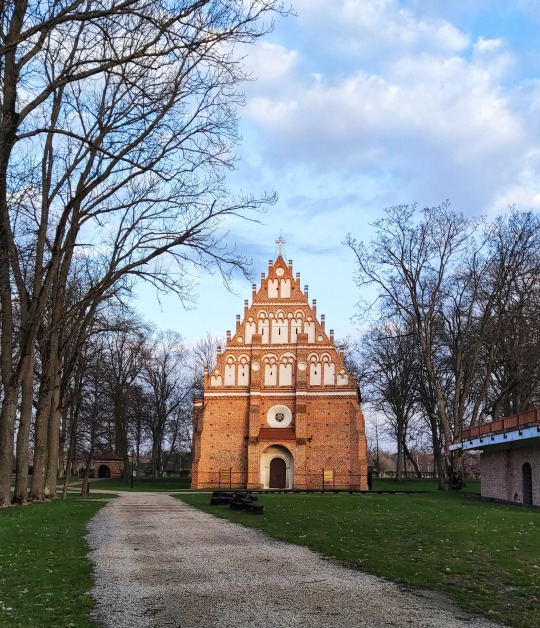
Kodeń [ˈkɔdɛɲ] is a village in eastern Poland on the Bug River, which forms the border between Poland and Belarus. Administratively, it belongs to Biała Podlaska County in Lublin Voivodeship.
[ the description taken from the Wikipedia ]
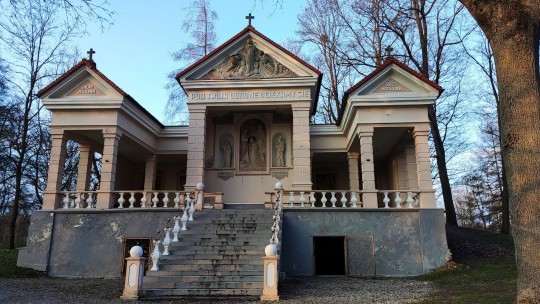

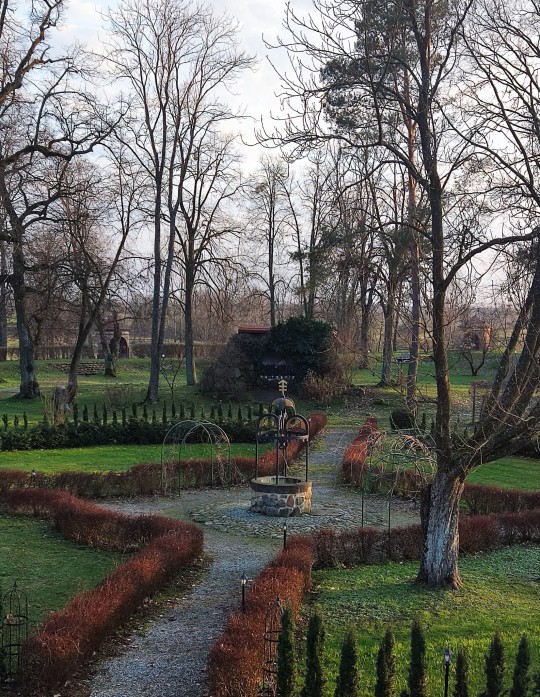
Kalwaria Kodeńska | The Kodeń Calvary
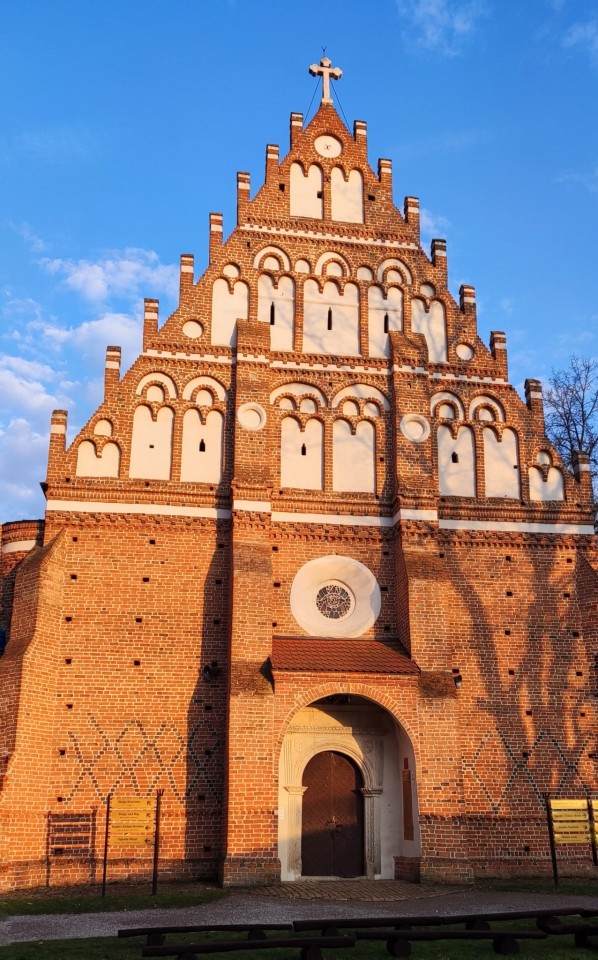
Kościół Świętego Ducha | Church of the Holy Ghost
The Gothic castle church, currently a Roman Catholic filial church of St. Anna's parish in Kodeń. The temple, along with the ruins of the Sapieha castle, the former armory, and the stations of the Via Dolorosa processional route, compose the area of the Kodeń Calvary. The church was founded at the same time as the Kodeń castle by the Voivode of Nowogródek, Paweł Sapieha, around 1540. It served as the Sapieha family court chapel until the 19th century.

Bazylika św. Anny w Kodniu | St-Anne's Basilica
The church of the Roman Catholic parish of St. Anna in Kodeń. The church was built between 1629 and 1635 in the late Renaissance style on the site of an earlier wooden church from 1599. The construction was led by the Lublin mason J. Cangerle. In 1657, the church was plundered by the Swedes who removed the lead roof and stole the bells. In 1680, fire destroyed the church and the town, but by 1686, after the completion of its reconstruction and alteration (western tower), the church was consecrated again. The Baroque façade dates back to 1709.

The altar of the Basilica - Matka Boża Kodeńska | Mother of God of Kodeń [ the descriptions of the churches were taken from the Polish Wikipedia and were translated into English by me ]
#poland#landscape#polish landscape#art#polish architecture#architecture#church#history#catholicism#christianity#easter#palm sunday#kodeń#polska#polish#polblr#spring#travel
22 notes
·
View notes
Photo

1733-1734 Louis de Silvestre - Augustus II (Augustus the Strong), Elector of Saxony
(National Museum in Lublin / Lublin Castle)
78 notes
·
View notes
Text

@mafaldinablabla oh? What's wrong with Bassano del Grappa / Bassano Venuto?
See, I picked it because it was about 50 miles west of Pordenone, which is about 50 miles west of Gorizia, etc etc etc. The logic on Option 6 is that he's been running due west without stopping (except for that day he teleported to Lublin because I got Poland and Slovenia mixed up) and that's just where he happened to end up.
So far from this I have learned that
Gyula is famous for its spicy sausages
Kalosca has good paprika
Ljubljana is not the same as Lublin
Lublin is famous for its onion buns
Gorizia has a castle
Gelato is good for your mental and physical health
Bassano del Grappa used to be called Bassano Venuto
It's great! I am excited to learn more things about a lot of places I picked almost at random off google maps in the middle of the night from the people who love them
55 notes
·
View notes
Text
Republic Of Many Nations - Historical Opportunity for Central/Eastern Europe?
(This is a translation of an exhibition created with the cooperation of multiple Slovak and Polish institutions for the study of history that hanged in the corridors of University of Prešov in late 2023. Consider this an introduction to Rzeczpospolita for all my 1670 girlies. It's heavily biased in favor of Rzeczpospolita, luckily in ways that are neither subtle, nor do they detract from its informational value. I am leaving out most of the pictures and the commentary under them, as well as the quotes included - simply because I couldn't fit them into the format of a tumblr article. The notes bellow in [] brackets are mine, the rest of the text is from the exhibition itself, and the pictures, or something close to them - like the same building from a different angle - appeared on the exhibition panels as well. Commentary on the pictures is also from the exhibition.)
***
Did you know that from the end of the 14th century untill the end of the 18th century a unique republic existed in what is now Poland, Lithuania, Ukraine and Belarus, which was the biggest state in Europe and which wasn't founded by military expansion, but by a peaceful alliance of Kingdom of Poland and Grandduchy of Lithuania? This republic gradually fell to the pressure of surrounding absolutist monarchies led by the Tsardom of Muscovy [1], but its legacy persists in the ethos of civil liberties, democratic participation and diversity. Legacy of this republic has become a part of the identity of nations in the Middle/Eastern Europe, which for more than two centuries resisted Russian imperial rule and which cling to these values to this day.
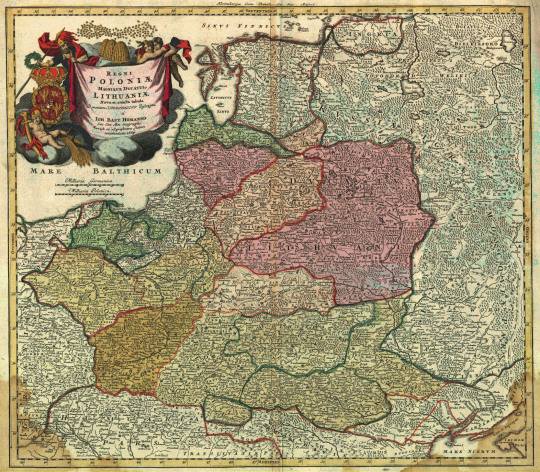
1.) REPUBLIC OF MANY NATIONS The beginings of the "republic of many nations" can be traced to the year 1385, when the hand of Jadwiga, heir to the Polish throne, was offered to Jogaila, the Grand Duke of Lithuania, with the stipulation that he should become a Christian. When Jogaila ascended the throne of Poland as Władisław II. Jagiełło, it created a dynastic link between Poland and Grandduchy of Lithuania, which besides Lithuania consisted of lands in today's Belarus and Ukraine. When on the 1st of July 1569 in the Lublin Castle Polish nobility agreed to extend their privileges to the Lithuanian nobility in exchange for Lithuania ceding large territories to the Polish crown, an agreement was born, on the basis of which a dynastic union transformed into a commonwealth, now called Rzeczpospolita, i.e. The Republic. Though initially the union of these polities was motivated by the existence of common enemies - the Teutonic Order and later Russia - the strongest bond between them turned out to be the unique arrangement established by the Polish and Lithuanian representatives. The "Republic" in the name of this polity was supposed to demonstrate that the Commonwealth would be ruled by its noble citizens regardless of whether their mother tongue was Polish, Lithuanian or Ruthenian (common ancestor of Rusyn, Belarussian and Ukrainian). Though Republic was for hundreds of years plagued by numerous internal issues, and by the end of the 18th century it was destroyed by the aggression of its neighbours, in 1791 citizens managed to approve a unique document - Constitution of 3 May 1791, now considered the first modern constitution in Europe...
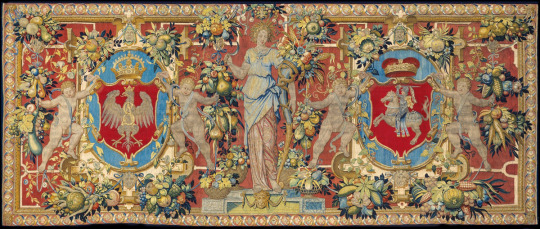
2.) STORY OF THE CROWN AND THE GRANDDUCHY Even after the Union of Lublin, the Polish Crown and Grandduchy of Lithuania were still separate states, just like they used to be for hundreds of years before that. After all, the rulers of Poland had their own archbishopric and royal title since the early 11th century, struggling for power against the likes of Přemyslids, while the grand dukes of Lithuania, attempting to revive the legacy of Kievan Rus', still hesitated whether to accept baptism from Rome or Constantinople. While many of the differences between them disappeared after the creation of Polish-Lithuanian Commonwealth, as the Lithuanian estates adopted the lifestyles of Polish nobility, the grandduchy continued to have their own legislature in the form of so-called Lithuanian Statutes, as well as their own army and finance, and a strong sense of self-determination. However, the connection between Lithuanian and Polish society was very strong - in October 1791, shortly before the final occupation of the Republic by the Prussians, Russians and Austrians both Polish and Lithuanian representatives agreed upon The Mutual Vow Of Both Nations [2], in which they promised that the story of Rzeczpospolita should continue in perpetuity as an indelible federation of the two countries...
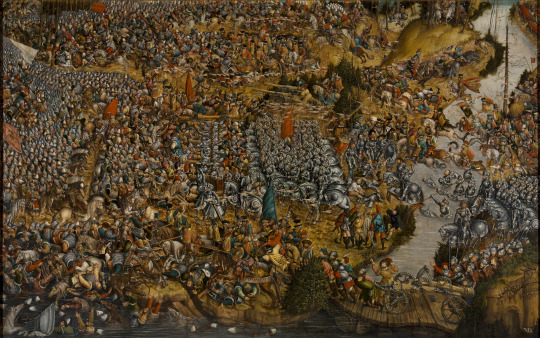
3.) THE STORY OF UKRAINE: A MISSED OPPORTUNITY FOR THE REPULIC? While its name points to a country "somewhere on the edge", Ukraine was a tempting target for many powers since the Middle Ages. After the fall of Mongolian Golden Horde in the 14th century, it was, as the former core of Kievan Rus' added to Lithuania, which presented itself as a continuation of this great Kievan empire. In this way, Lithuania came into the crosshairs of Muscovy, which held similar aspirations. After 1569 the Commonwealth of Poland-Lithuania, which in many ways respected the distinct Ukrainian identity and unlike Moscow didn't consider it to be just a branch of the Russian nation, became its protector from the Muscovite incursion into Ukraine. Even the Polish-Lithuanian nobility living in Ukraine identified and called themselves "Ruthenians", and Grand Duchy of Lithuania used so-called Ruthenian as its official language. Cossacks living in the Wild Fields in the Dnipro river basin, who on the one hand didn't accept the autority of Polish-Lithuanian nobility, on the other hand helped to safeguard the borders of Rzeczpospolita from Moscow and the Ottomans, were also bearers of the sovereign Ukrainian identity. In the middle of the 17th century dissatisfaction of the Cossacks with certain magnates and issues of religion grew into the bloody uprising of hetman Bohdan Khmelnytsky, who in 1654 turned to the Muscovite tsar [1] with a plea for protection. However, among the Cossacks, critical voices towards Moscow could also be heard, especially the voice of Ivan Vyhovsky, who in 1658 made a deal with the Commonwealth of Poland-Lithuania about its transformation into the Republic of Three Nations with a coequal position of the Grand Duchy of Russia [3] and orthodoxy. Because of the opposition from a portion of nobility, Cossacks and Moscow, the agreement never went into effect, and thus both the Republic and Ukraine missed their historic chance...
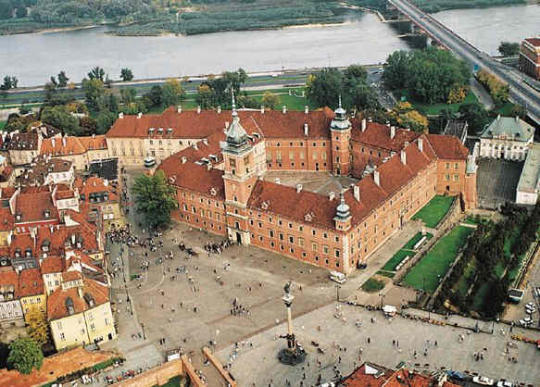
4.) KING IS THE FIRST AMONG US, THE FIRST AMONG EQUALS The creation of Polish-Lithuanian Commonwealth was also a key flashpoint for the transformation of royal power. Since Polish king Sigismund II. August, who thanks to the Union of Lublin became the ruler of Rzeczpospolita, died in 1572 without issue, Polish-Lithuanian nobility in accordance with the original agreement established the viritim election principle, according to which every noble present could elect their own king on special convocational sejms (diets). Ruler elected in this manner had to confirm noble privileges trough the so-called Henrician Articles and a collection of vows Pacta Conventa. Ruler's political power was thus perpetually subject to the rule of law (lex regnat non rex), and if the nobility deemed the ruler's actions unlawful, they could in the case of an emergency even call up a confederation and declare armed resistance. Thus, from then on until the acceptance of Constitution of 3 May 1791, the election of Polish-Lithuanian monarch became subject to the interests of foreign dynasties and local magnate houses. In the 18th century, an era during which the surrounding countries mostly adopted absolutism, the weakness of royal power came to be seen as the fundamental reason for the political decline of the Republic.
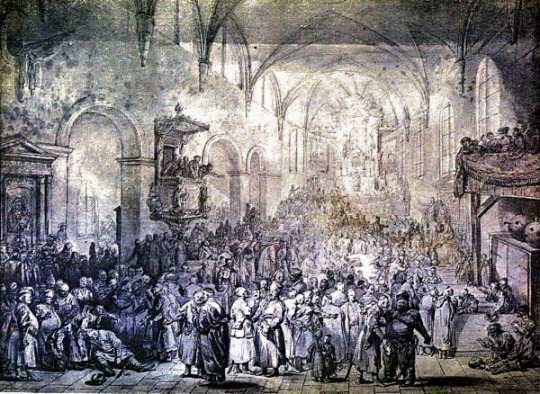
5.) NOT A MONARCHY, NOR AN ARISTOCRACY, NOR A DEMOCRACY The name Rzeczpospolita (the Republic) wasn't chosen for the Commonwealth of Poland-Lithuania by accident. Polish-Lithuanian nobility actually believed that their country can revive the lost ancient legacy of the just polities, and so they considered their Rzeczpospolita, to which they had given the epithet "most serene" [2], to be the third real republic in human history (after the Roman and Venetian ones). Members of the Polish nobility, who were convinced that the noble station brings with itself the duty of civic virtues, thus positioned themselves as the new Aristotles, and considered the so-called mixed constitution, which combined virtues of the monarchy, aristocracy and rule of the people, to be the best way to organize the state. Power in Rzeczpospolita was thus divided between the elected king, the Senate consisting of highest state officials, and a chamber of noble-born representatives, who could use the later infamous liberum veto [4], or the right of individual protest, which especially in the 18th century severely hampered the flexibility of the Republic. However, in the Republic, a specific form of political decisionmaking wasn't practiced only by the parliament of nobles. In Ukraine, the Zaporozhian Cossacks created a very peculiar form of military democracy. In their fortified camps (sietches [2]) the sietch councils formed by direct election, and they in turn elected their military commanders (atamans) and government officials, made decisions about war and piece, economic policy, even legal judgements.
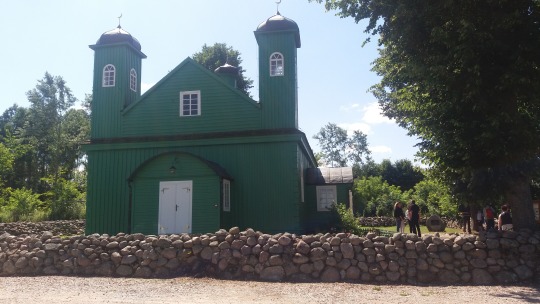
6.) DIFFERENT FAITHS LIVE TOGETHER WITHOUT NEED FOR BORDERS Calling the ancient Republic "Polish" might be misleading, because today the epithet "Polish" is tied mostly to the ethnic nation. However, since in the Polish-Lithuanian Commonwealth, the nation was the nobility, which based its honour on citizen loyalty towards the common polity inspired by antiquity, the noble "nation" at the time included all members of the class no matter the country they were born in, language they spoke, or the faith they professed. That's why, concerning the question of self-perception in the period, we often see the phrase "I am of the Polish nation, but of Ruthenian birth." This citizenship-based definition of Polish identity was closely related to the unprecedented religious tolerance, as codified in 1573 by the so-called Warsaw Confederation. The fact that the noble "nation" included not only Catholics, Lutherans, Calvinists, Uniates and Orthodox Christians, but Mennonites and Arians, led to Rzeczpospolita being called "a state without stacks", because the foreigners there didn't end up burned at a stake, but finding a refuge. However, in the 18th century, this fragile coexistence of different denominations was severely disturbed, because the neighbouring great powers loved to use the rights of religious minorities for their own ends. In the 3 May 1791 constitution, all faiths were thus tolerated, but the Catholicism was supposed to be the state religion.
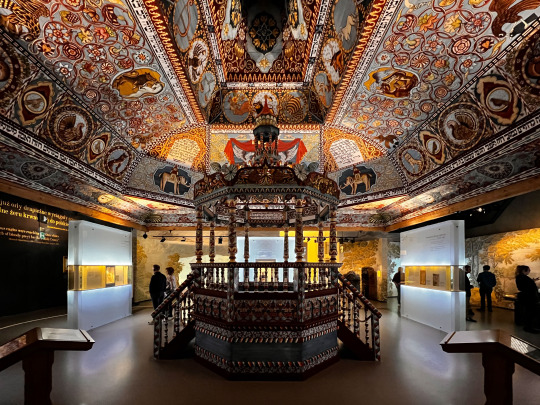
7.) POLONIA PARADISUS JUDAEORUM While the Jewish people were often banished from the rest of medieval European countries, kings of Poland granted many privileges to the arriving Jews. That being not just The Great Charter of Jewish Rights [2] from 1264, but also Privilegia de non tolerandis Christianis, which allowed Jewish merchants to settle in designated communities without Christian competition. Jews gradually gained the right to their own local administration (so-called kahalas) and around the time of the Union of Lublin even to summon their own parliament, called the Diet of the Four Countries [2] (also known as Va'ad). It is therefore no wonder that in the 16th century Europeans started to call Rzeczpospolita "Jewish paradise" and that three quarters of the entire Jewish population of the world lived here. This peaceful coexistence started to suffer in the middle of the 17th century, mainly because of Cossack uprisings, during which thousands of Jews were massacred for being alleged allies of the nobility, while in the 18th century the country experienced general decline in religious tolerance. However, as part of the attempt to save the Republic during the so-called Great Sejm [2] of 1788-1792, a special commission was created to designate the position of Jews within Rzeczpospolita. And when the famous Kościusko uprising defending the independence of Rzeczpospolita and the legacy of the Constitution of 3 May 1791 against the Russian invasion broke out, many Jews didn't hesitate to join the first Jewish regiment and fight in battle for the Republic.
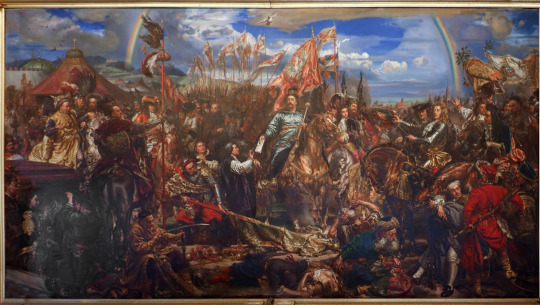
8.) WALLS OF CHRISTIAN EUROPE Noble citizens didn't perceive their Republic as just an embodiment of ancient community, but also a military power. That's why the nobility placed so much value on military virtues and in emulation of ancient Sarmatians, whose descendants they considered themselves to be, they also relied heavily on elite cavalry - the winged hussars, whose exotic appearance and military prowess gained them respect on the battlefield. Polish-Lithuanian nobility, convinced of the exceptional nature of their own Republic, started to perceive their polity as "antemurale christianitatis" - the bastion of Christendom, which protects the eastern borders of Europe from the outside threat. In the 1621 battle of Khotyn the united Polish-Lithuanian army, boosted by thousands of Cossacks led by the hetman of Zaporizhzhia Sahaidachny, a great promoter of cooperation between the Cossacks and Poland-Lithuania, managed to hold back the Ottoman army several times its size. The Polish society connected several such victories to the Divine providence and a faith that the Republic is fulfilling its holy mission in history. This is also the reason why the hussars of king Jan III. Sobieski are to this day considered the saviours of Vienna from the Ottoman siege of 1683 and the madona of Czenstochowa is perceived as the one responsible for the Polish-Lithuanian victory over the Swedes. Though the military glory of the former empire had declined in the 18th century, the enlightenment era reformers didn't forget the valor of their ancestors - the School of Chivalry was established on the prompting of king Stanislaw August Poniatowsky, and among its absolvents was Tadeusz Kościuszko, born in the Duchy of Lithuania, leader of the last stand of the Republic against Russia in 1794.
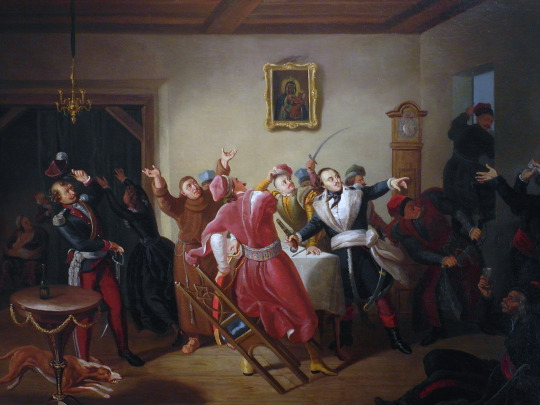
9.) NOTHING ABOUT US WITHOUT US While the king od France could've said "I am the state", in the Polish-Lithuanian Union the state were its citizens, that being the nobility. Nobility's agitation for their privileges gradually bore fruit - particularly important were the neminem captivabimus privilege, ensuring untouchability of a person, and the nihil novi rule, forbidding the king from issuing laws without the approval of a diet of nobles. Power of the nobility was among other things ensured by the size of this estate, since it made up 8-10% of the population (for comparison, in Great Britain, even in the mid-19th century only 6% of the population had a right to vote). In comparison with other countries, all members of the nobility were absolute equals in the eyes of the law. All of these rules were supported by the specific ideology of sarmatism, according to which were all noblemen, as the alleged descendants of the ancient ethnic group, required to protect the so-called "golden liberties" - set of rights and values which made the Polish-Lithuanian nobility consider themselves the most free nation under the the sun. Besides the exotic clothing [5], sarmatism was also expressed in numerous acts of rebellion against their own king - for example, in the 18th century nobility founded the Bar Confederation, which was supposed to rid the Commonwealth of the Russian influence, but ended up leading to the first division of Rzeczpospolita lands among the imperial powers.
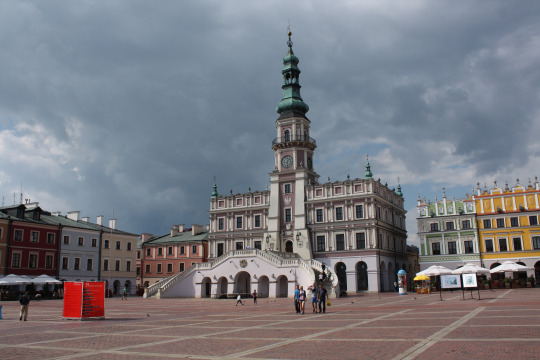
10.) SPLENDOR AND MISERY OF THE MAGNATE FAMILIES Though in the Commonwealth, any use of titles that would distinguish between lower and higher nobility was strictly forbidden, the issue was nonetheless made more complicated by the high economic inequality even among the nobles. Some noble houses were able to create estates so large even the royal holdings paled in comparison. Their dominance rested on their large wealth, high positions in state offices and background influence on politics. This informal class of magnates was most prominent in the eastern part of the country, where a handful of houses amassed giant private armies and sophisticated webs of noble clients, since many of the impoverished nobles voluntarily worked for the magnates, and some even voted in the parliament according to the wishes of their benefactors. These most powerful magnates were thus also titled "little kings", and some of them actually did become elected kings of Poland. The fact that many magnates, especially in Ukraine, were out of the reach of central state power and treated their subjects especially badly led to the outbreak of antimagnate rebellions, the most successful of which was the Bohdan Khmelnytsky Cossack uprising of 1648. However, the magnate activity cannot be seen as black-and-white, because their role also involved foundation and patronage on a grand scale - it was thanks to them that many treasures of Polish-Lithuanian architecture were created.
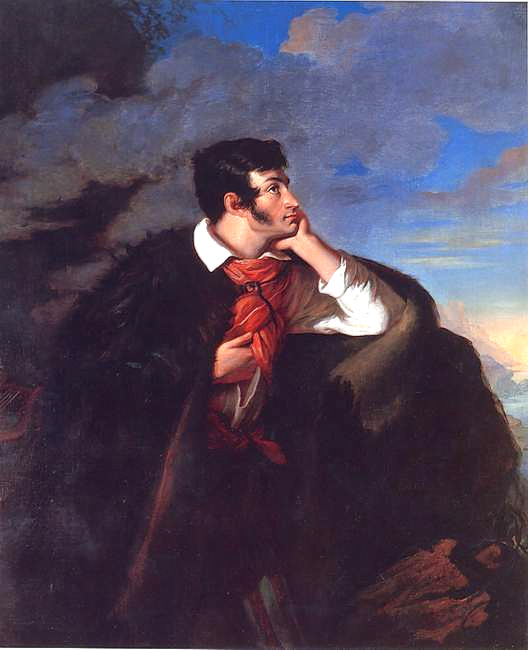
11.) LEGACY OF THE REPUBLIC OF MANY NATIONS The Republic of Poland-Lithuania was erased from the map in 1795. However, its tradition remained in the ethos of fight "for freedom yours and ours", which was echoed by the participants of many antirussian uprisings in the 19th and 20th century. This ethos called back to the tradition of free republic, which, unlike the Russian Empire - that forced subjugated polities to adopt the samoderzhavie [6], orthodoxy and russification triad - supposedly enabled different nations to keep their freedom and "unity in diversity". Although the ethnonationalism of the 20th century has dimmed the memories of their common legacy and caused plenty of bad blood among the different nations of former Rzeczpospolita, the idea of confederation or close cooperation against Russian imperialism was returning in their consciousness, whether during the 1863 uprising or shortly after World War I. In the communist era, the writer in exile Jerzy Giedroyc famously prophesized that Poland can be truly free only when so are Lithuania, Belarus and Ukraine. For Ukrainians and Belarussians, who have been threatened by the imperial idea of Greater Russia and the vision of a unified "Russian world" even after 1991, are heroes (like prince Konstanty Ostrogski or hetman Sahaidachny) and famous moments in the history of the Republic fundamental symbols of their national sovereignty and belonging to the European civilizational space. They will never cease to remind everyone that the Republic is not dead while we are alive and believe that the ties of mutual civic loyalty are stronger than differences in language, faith or ethnic origin, stronger than any enemy that would attempt to tear these ties of our values.
***
[1] - Russia. They are talking about Russia. Y'see, the etymology of "Russian" in Eastern Slavic languages is kinda confusing; originally, it meant all Eastern Slavs, but later on it came to be associated with the largest and most culturally dominant group - which is to say the predecessors of modern Russians under the rule of Princedom of Muscovy. Eventually, Ivan IV., the Grand Prince of Muscovy got himself crown the Tsar of All Russians, which was a bit presumptuous considering a whole lot of people who very much weren't under his rule also identified as the Rus'/Russians. Still, it stuck, and when Ukrainians and Belarussians wanted to define themselves against their Russian overlords, they abandoned the label "Russians" altogether. Calling post-Ivan the Terrible Russians "Muscovites" is a bit of antiquated terminology that would be common in Polish-Lithuanian Commonwealth.
[2] - Literal translation, because I don't know what it's called in English-speaking historical literature.
[3] - Used here in the older sense of the word, i.e. Eastern Slavic in general (see [1]). In this case, the Eastern Slavs in question are clearly mostly Ukrainians despite being called Rus'/Russians (YES I KNOW)
[4] - Okay, so have you seen the first episode? The whole "One of us was against. End of story. We have a democracy." thing was... Barely an exaggeration to be honest.
[5] - Compare the shit Jan Paweł and his friends wear to normal 17th century male clothing (to which Ciesław and especially magnate's son come pretty close to) and you'll get the gist.
[6] - rus. autocracy, or rather the name for specific absolutist tradition of Russian tzars
***
Notes on the pictures:
1.) Map of Rzeczpospolita from the first half of the 18th century (most likely around 1739), made by the cartographer Johann Baptist Homann.
2.) Tapestry with the coats-of-arms of Poland and Lithuania - The Union of Lublin led among other things to the joining of Polish and Lithuanian coats-of-arms, so the new state coats-of-arms combined the polish royal eagle on red field with the traditional symbol of Lithuania, the Pogoń (Vytis in Lithuanian), or the armored knight on a horse, which to this day is part of the legacy of the Grandduchy in modern Lithuanian and parts of Belarussian society.
3.) Battle of Orsha (1514) in which the orthodox prince Konstanty Ostrogski, claiming to carry on the legacy of the Kievan Rus', led the united Polish-Lithuanian forces and destroyed the Muscovite invasion army despite being outnumbered, saving the independence of the Grandduchy. After 1991 the day of the anniversary of this battle was celebrated as a holiday of the Belarussian army. The holiday was later abolished by the Lukashenko regime, one can currently end up in jail for celebrating it. In 2017, a common Lithuanian-Polish-Ukrainian brigade was named hetman Ostrogski.
4.) Royal Castle in Warsaw - Since the late 16th century, Warsaw became the new center of power in the Republic. The Royal Castle, originally the medieval seat of the dukes of Massovia, was rebuilt in the new baroque style. During World War II, the castle was completely destroyed. For a long time, the communist regime was refusing to greenlight its reconstruction, and its restoration based on old engravings and pre-war photographs was only made possible trough the massive public pressure.
5.) Painting of the French artist Jean-Pierre Norblin portrays a traditional part of the political life in Rzeczpospolita - a session of the so-called sejmik (Polish diminutive of sejm, a.k.a. diet). On these local assemblies of nobles of the given region, deputies for the meetings of the central sejm were elected and instructions for these deputies were agreed upon.
6.) Kruszyniany - Presence of the muslim Tartar community is part of the legacy of Rzeczpospolita. Tartars live on the territories of today's Lithuania, Belarus and Poland continuously since the 14th century. They have proven their worth as warriors in service of the Republic. Original Tartar mosques can be found especially in Podlesie in today's northeastern Poland and in Trakai in today's Lithuania.
7.) Ceiling of a synagogue reconstructed for the POLIN Museum of the History of Polish Jews in Warsaw, which in 2015 was awarded the title of Best Museum in Europe. It is in this modern museum that you can learn the most about the Jews of Rzeczpospolita, the largest Jewish diaspora at the time.
8.) Sobieski at Vienna - Painting of Jan Matejko depicts the Polish king Jan III. Sobieski, who after his famous triumph over the Ottoman Turks in 1683 sent a letter to pope Innocent IX., in which he writes that the Christian Vienna was saved.
9.) Casimir Pulaski, later national hero of the United States, escaped Poland after the failure of the Bar Confederation in 1769-1772. The confederation was one of the last attempts to free the country from the increasing dependency on Russia.
10.) Zamoćś - Renessaince city founded by an exceptional person. Jan Zamoyski came from a not very wealthy noble family, but trough his own merits eventually became the richest and most powerful man in the Republic. The town hall of Zamość on the photo.
11.) Adam Mickiewicz could be the symbol of the common legacy of Rzeczpospolita. The greatest poet in the Polish language literature was born in today's Belarus (1798) and always felt like a citizen of Rzeczpospolita. His most important work begins with a line "Lithuania, my fatherland!" It was Mickiewicz who was remembered by the pope John Paul II., when he proclaimed the Polish-Lithuanian Commonwealth the predecessor of cooperation of the entire continent within the European Union ("from the Union of Lublin to the European Union").
12 notes
·
View notes
Text

Inside the courtyard of Lublin Castle. See a view of the facade here :)
[Open for better quality!]
#traditional art#original art#watercolour#water based markers#aquarell#architecture#polska#lublin#zamek w lublinie#the 1979 is abt the fountain btw#solar draws#sketchbook
9 notes
·
View notes
Text

PL:
Zamek w Kazimierzu Dolnym (część 2 z 2)
Zamek wybudowano w latach 40. XIV w. za czasów króla Kazimierza Wielkiego, po napadzie Tatarów na ziemię lubelską. Jego kształt dostosowany jest do rzeźby terenu. Dziedziniec otaczały wysokie mury, w których ludność mogła się schronić w razie niebezpieczeństwa. Na środku wykuta była studnia.
Zamek stanowił siedzibę starostwa, a jego architektura zmieniała się na przestrzeni wieków. Od strony miasteczka znajdowały się pomieszczenia mieszkalne, po przeciwnej stronie – brama. W miejscu, gdzie obecnie znajduje się punkt widokowy, stanęła w XV wieku. czworoboczna wieża mieszkalna, wysadzona w 1809 roku przez Austriaków. W XVI wieku mury skrzydła mieszkalnego i wieże zostały ozdobione attykami.
Zamek został zniszczony w czasie Potopu Szwedzkiego i nigdy nie został już odbudowany.
EN:
Castle in Kazimierz Dolny, Poland (part 2 of 2)
The castle was built in the 14th century during the times of King Casimir the Great, after the Tatars attack on the Lublin region. Its shape is adapted to the terrain. The courtyard was surrounded by high walls where people could take shelter in case of danger. There was a well carved in the middle.
The castle was the seat of the starosty, and its architecture changed over the centuries. There were living quarters on the town side, and a gate on the opposite side. In the place where the viewpoint is now located, a four-sided residential tower was built in the 15th century, blown up in 1809 by the Austrians. In the 16th century, the walls of the residential wing and towers were decorated with attics.
The castle was destroyed during the Swedish Deluge and was never rebuilt.
#kazimierz dolny#kazimierzdolny#zamek#castle#castello#view#widok#architektura#kazimierz#lubelskie#polska#poland#architecture#gothic#gotyk#gothicarchitecture#architekturagotycka#krajobraz#landscape#historia#history#ruiny#ruins
2 notes
·
View notes
Text
alright let's go
there's at least a couple of houses. Taurys has his own lil castle in Lithuania he barricades himself in after a fight to pout, Feliks owns a giantass folwark in Ukraine he barely visits but gets a significant inflow of money from it, and the estate he spends the most time at is located somewhere between Warsaw and Lublin, either near IRL Łuków or a fictional, Łuków-alignedly named place for last name etymology reasons. We're burning this one down around 1655 but it's fine and a story for another time, they'll get another place
Ukraine lives with them... sometimes. Sometimes she doesn't. She's difficult to control and as much as Feliks would want to keep her close, keeping his own head close is more enticing.
Taurys kicks them out of the house whenever they start fighting because they chop up too much good furniture in the process
Belarus lives with them. Lithuania is her actual legal guardian, but Feliks had immediately pushed himself onto the fun rich uncle position. [For my setting] because of her visually young age she's treated accordingly, like a girl too young to marry or party, but left with a lot of liberty instead.
there's others visiting or living there temporarily. Poor Gilbert goes through a whole r/JustNoFamily adventure of getting married, having to still suffer Poland the Annoying Cousin In Charge, and eventually pretending to make up just go to no contact. I don't have enough braincells to make any 100% sure headcanons for Livonia because even looking at its table of contents on Wikipedia gives me a headache
when there's no war they live dream cottagecore househusbands lives exploiting peasants, keeping a cute chronicle, breeding horses and suspiciously staring at potatoes
unfortunately there's always some war
remember that one wonderful moment from With Fire and Sword where on Sunday the team splits up and Skrzetuski goes to a catholic church, Zaćwilichowski goes to an orthodox church, and Zagłoba goes to an inn to get wasted?

There's something so endearing to me about Poland and Lithuania taking to a catholic mass, Belarus and Ukraine going to an orthodox one, (possibly Prussia or Livonia leaving to a protestant church), and all of them meeting back at home for dinner.
FACE family is out, whatever the fuck Poland and Lithuania had going on with everyone living in their house during the commonwealth is in.
#just a couple of thoughts i could immediately note down x'D#OP if you are annoyed with me spamming under your posts please tell me & i'm sorry!#it's just that i need an impulse to start writing anything#ness cinematic universe#historical hetalia#hws poland headcanon#hws poland#hws PLC#hws lithuania#hws ukraine#hws belarus#hetalia headcanons
129 notes
·
View notes
Photo

#lublin#lublin city#lublin zamek#poland#polska#castle#zamek#zamek lublin#castle lublin#lublin castle#zamek lubelski#lubelski zamek#zamek w lublinie#lubelskie#polski zamek#polskie zamki#architecture#polish architecture#polska architektura#architektura#magic#story#star
1 note
·
View note
Text

The Red Hat, 23.07.2022 Plac po Farze, Lublin
#lublin#poland#polska#lubelskie#lubelszczyzna#lublin old town#lublin royal castle#polish architecture#architecture#blues sky#canon#nofilter#original photography on tumblr#photographers on tumblr#canon photography#photography#tree#summer
35 notes
·
View notes
Text





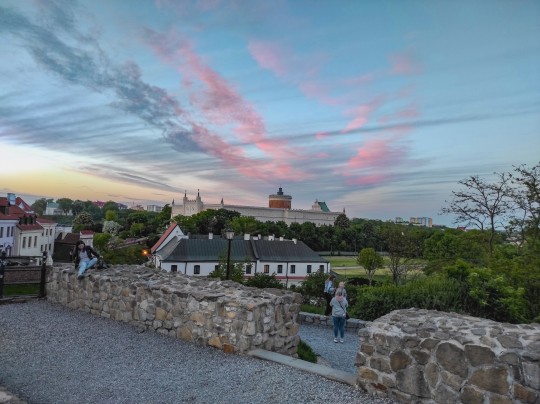
Lublin, wczesny wieczór nad Zamkiem i Starym Miastem
Adam Tatur - maj 2021
12 notes
·
View notes
Text

The Lublin Castle, Poland.
#art#artists on tumblr#drawing ideas#drawing#sketches#my draws#sketching#gray#page from sketchbook#page#get inspired#castle#lublin#poland#history#city#medieval#zamek w lublinie#neo-gothic#building#architecture
6 notes
·
View notes
Photo

Chapel of the Holy Trinity, Lublin Castle, Poland.
#Chapel of the Holy Trinity#Lublin Castle#Catholic#Brick Gothic#Polish Renaissance#architecture#chapels
6 notes
·
View notes
Text
64 notes
·
View notes
Photo

600-year-old Frescoes in the Trinity Chapel of the Lublin Castle, Poland [x]
2 notes
·
View notes